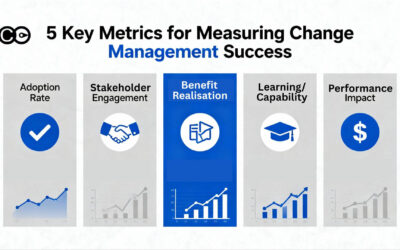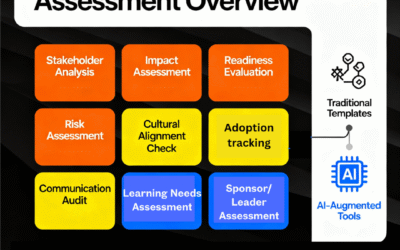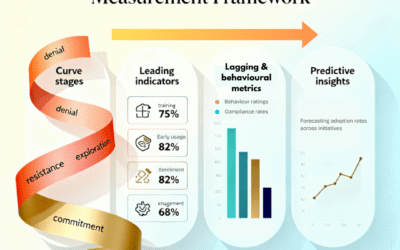Here is an infographic on examples of change management adoption metrics that you can use for your initiatives.
There are metrics examples for 3 types of initiatives:
- System implementation
- Compliance
- Restructuring
To find out more about change management adoption metrics check out our Comprehensive Guide.






